Screen time Addiction is real, and it‘s common. Learn a realistic and effective way to limit your child’s screen time and, in turn, improve social development and reduce mental health problems.
It’s like a scene from a horror movie.
You enter into the dark room that your children are inhabiting. Eerie music can almost be heard, and you see small flickers of light coming from the devices in their hands.
You call out to them, but they don’t answer. They don’t even look up at you.
Finally, you manage to somehow grab their attention. When they unwillingly lift their heads, you are suddenly taken back by the blank look in their eyes.
The expression is blank. Your children are zombies, but it is not brains that they crave. Nope, it is something much more accessible. It is electronic devices.
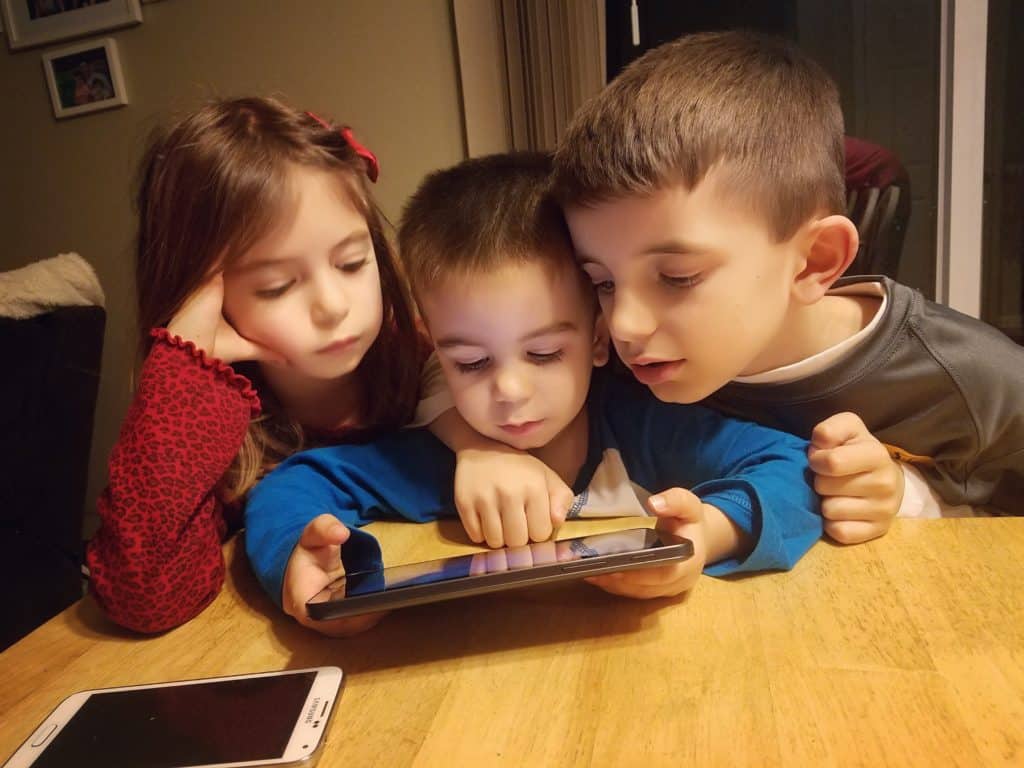
Related: Cell Phone Rules for Kids and Teens
Your children, like many other American children, have succumbed to this spreading epidemic of childhood screen addiction. And, I know this because I have been there.
Screen Addicts Anonymous
I come at you from a place of understanding, not judgement.
With all three of my children, I have had moments where I questioned if the amount of social media, youtube videos, and video games they were getting would produce negative effects on their real life social skills and emotional intelligence.
I couldn’t get them out from in front of the screen. Digital media paired with mobile devices will do that to anyone- especially young people.
As much as my husband and I try to encourage constant outdoor play and reading, it sometimes felt that they were starting to prefer being in front of screens instead of experiencing social interaction.
When I started to do the research, I was a little shocked at what I found regarding the negative outcomes and effects that the digital world had on children in the united states:
- Effect on sleep: Too much time viewing screens, specifically on portable devices, has a negative effect on the amount of sleep children of all ages get, but more so in children under the age of ten.
- Effect on activity level and childhood obesity: In some studies, obesity has been linked to excessive TV watching as a child.
- Effects on cognition and brain development: Studies suggest that kids who spend more than 2 hours per day looking at a screen score lower on thinking and language tests, and earn lower grades.
Cleveland Clinic Pediatrician, Dr. Skyler Kalady, explains that the impact of screen time on children is so significant because children need to explore their environments and develop motor skills. This movement and curious behavior isn’t happening if they are spending all of their time looking at an electronic device.
In fact, it is even causing something that experts refer to as Nature Deficit Disorder.
It’s not all negative. It depends on the types of screen time your child is using. One recent study showed association between watching educational shows., such as sesame street and improved social behaviors in preschoolers; including higher quality academic performance with lasting effects through high school. Learn the benefits of moderate screen time here.
Basically, like all other aspects of parenting, balance is key.
Your family needs to find balance and develop your own family media plan. I wanted to give my kids a childhood like I had – where we were glued to our bikes, not our phones. I decided it was time for a change, and any big change needs a thought-out plan.
If you are debating taking action to control your child’s screen time, this 7 step method is a gentle and surefire approach to get you on the right path.
You may also like: How to Encourage Your Kids to Make Close Friends
Step One: Have a Family Meeting to Create a Plan of Action
The first step is to talk through the decision with all family members. What is the reason you want to reduce screen time in your home? Do you want to spend more quality time with your children, avoid the negative effects, or simply just don’t feel comfortable when they look at you with zombie-like expressions after spending time on YouTube?
Get everyone involved in the discussion to stop screen time addiction. When we started to talk to my 6 year old daughter about her overuse of screen time, we realized she wasn’t feeling so great about it either.
During your discussion, make realistic goals. Some screen time is okay, and absolutely needed (in my opinion- Mama needs a break sometimes!). As mentioned above, quality educational programs can have positive effects.
If you are unsure how much screen time is acceptable, listen to the experts. In regard to daily limits, the American Academy of Pediatrics (AAP) recommends:
- Toddlers: focus on physical playtime for babies and toddlers and only use educational media with young children 18 months and older.
- Young Kids Ages 2 and 5: screen time should not exceed one hour per day and needs to involve the parent who can help their child learn from educational programs.
- Ages 6 and older: place consistent limits on the time spent using media, and the types of media, and make sure media does not take the place of adequate sleep, physical activity and other behaviors essential to health.
- Older Children Ages 10-18: the CDC recommends no more than 1-2 hours of screen time per day for older kids

Step Two: Plan for a Day to Initiate Rehabilitation
Choose a date, in advance, to start your action plan. This will give your children time to prepare and come to terms with the new lifestyle routine.
Then, when you get started, set your child’s screen time daily limit and stick to it them.
Related: 7 Mandatory Social Media Rules for Kids
Step Three: Make a List of “Things to do Instead”
To make the transition easier, create a list of alternative activities.
When we reduced screen time in our home, my children were a little lost. They would ask my husband and I, “So what do we do now?” By preparing a list of ideas, your child can have easy go-to options to replace the void.
I purchased the following simple items and put them in a bin for my children to encourage play and face-to-face interactions. I told them to check the bin when they were looking for something to do:
- Sports equipment: Wiffle Ball Set, soccer ball
- Outdoor toys: Chalk, bubbles, balloons
- Indoor activities: Lego’s, Play-Doh , coloring books
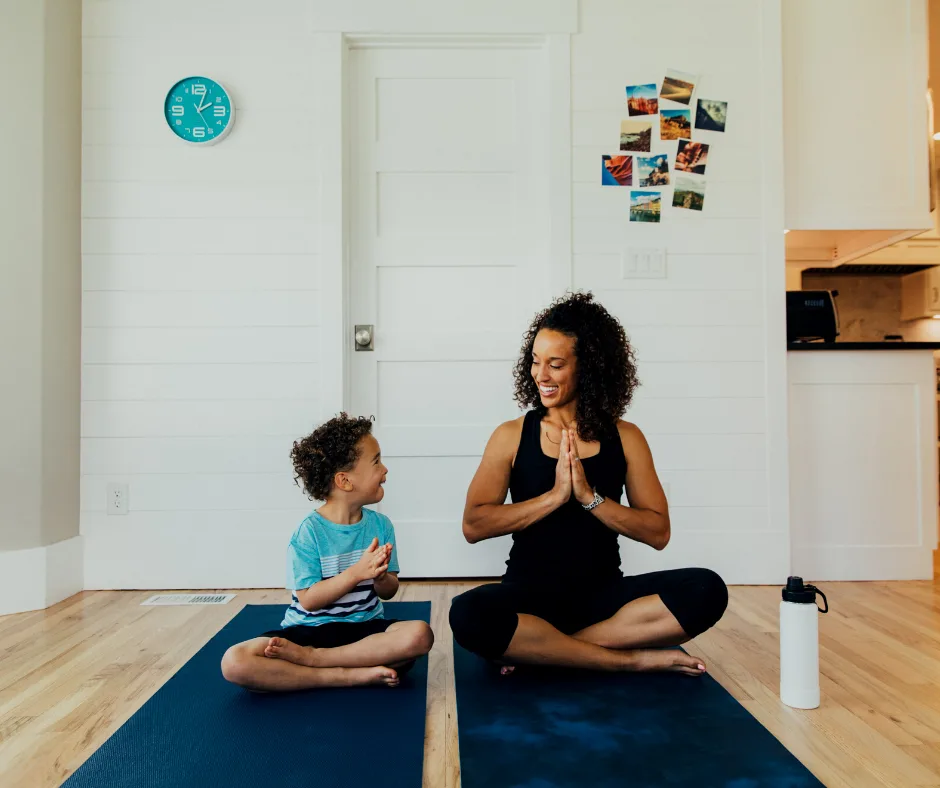
Step Four: Out of Sight, Out of Mind
It is pure torture for a child to be told that they can’t go on their technology device, but to leave it in plain view. If it is accessible, they will grab for it. Children are lacking the level of impulse control needed to walk away from the temptation.
Move the devices to a new location, out of view, that is not so tempting. Limit screen use with this simple trick.
You may also like: How to Encourage Social Interactions in Shy Kids
Step Five: HELP Your Kids Play
It may sound a little counter-intuitive, but sometimes, as parents, it is our job to help teach our kids to play. Pull out some toys, sit down with your child, and show them how fun it can be to play and use their imagination.
Some kids will dive right into imaginative play, while others will need a little push. My oldest son is in-touch with his imaginative side, but my daughter benefited from parental interaction while playing at first.
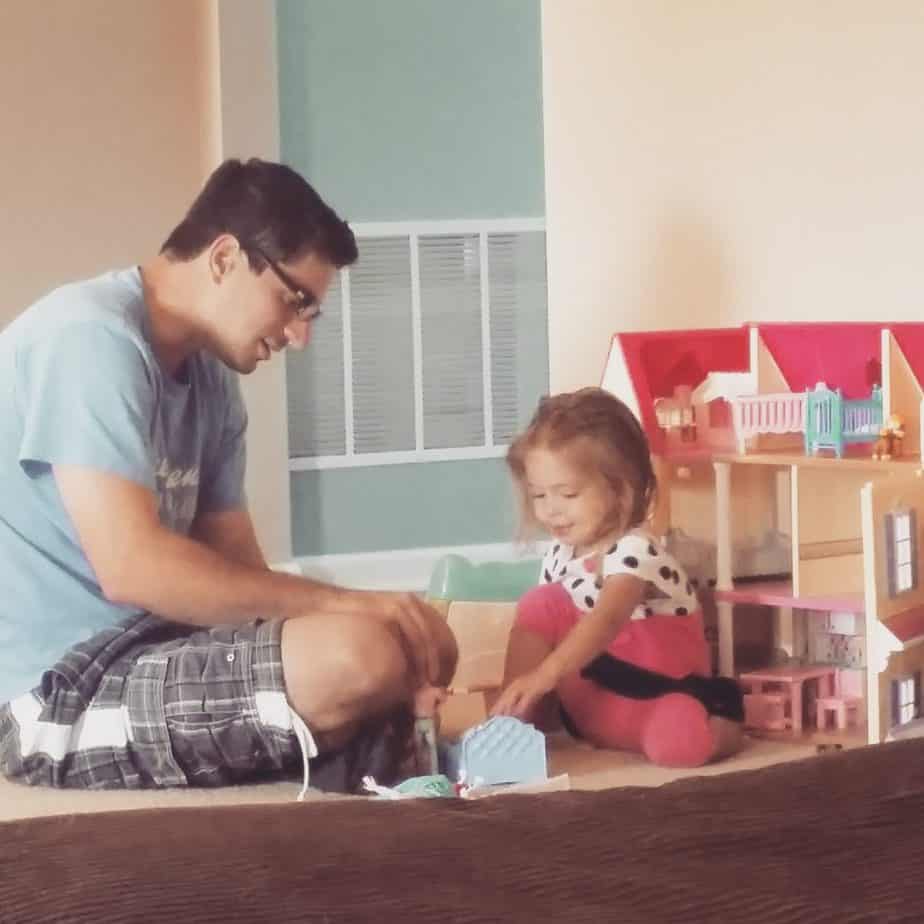
Step Six: Model this Behavior
You can’t expect your children to be all for this new lifestyle routine if they see their parents constantly on their phones or devices.
Unplug as a family. Show your children that there is life past the screen. Use this as an opportunity to engage in more activities together and strengthen relationships.
Learn about common sense media rules here.
Step Seven: Create Alternate Routines to Stay Unplugged
Most importantly, create new routines that do not include screens will help you fight screen time addiction in school-aged children.
Does your child automatically grab for a device the moment they get home from school? Start a new routine to replace this. Encourage them to have a snack and work on their homework during this time.
Think of the times that technology usage is high, and try to adjust this.
Print this as a reminder to end screen time addiction:
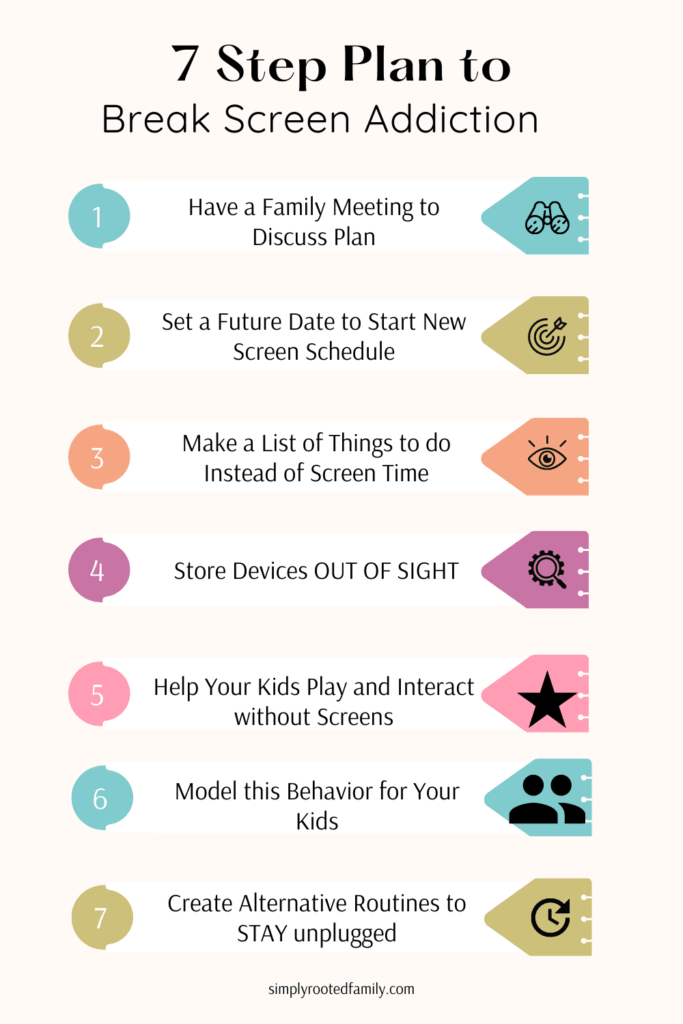
Final Thoughts on Screen Time Addiction and Kids
If your screen time limits feel non-existent, the good news is you can mange the smart phone obsession with this family media plan.
Soon after starting this 7 step method, my children quickly began to rehabilitate from their addiction. Our house was filled social connected, language development, and genuine family time. After only a few days, they almost fully forgot about their tablets.
Related: What happened when we detoxed from screen time.
We save handheld devices and video games for rainy days and lazy weekend mornings. We have dinner table conversations, family dance parties, and outdoor adventures instead of collectively zoning out for hours.
Now, the only time we are Zombies are when we are dancing to “Thriller”.
If you found this helpful, share it! Follow us on Facebook!


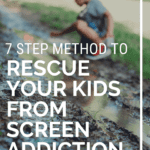
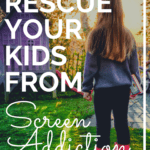
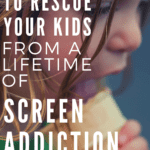
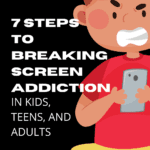
Stephanie
Tuesday 27th of February 2024
Yes I agree 💯 but you have activities for young children and they will work, but you have left out the alternative activities for teens ages between 13-18 if you manage to get them off the screens what do they do... Some ideas would be great. Thanks Stephanie
admin
Thursday 29th of February 2024
With my teen it is more challenging for sure! We try to stay active as much as possible, have "reading time" throughout the day, and try other things like gardening and baking. Hope that helps!
Anthony
Tuesday 12th of September 2023
I was frustrated on how to get my kids to stop using their devices where I myself use my device for work and play purposes, these tips at least gives me better ideas on how to aproach this problem as a family, and helps me understand their concerns as well as mine.
Sage
Monday 11th of September 2023
I 1000% related to everything you shared. To anyone reading this and also struggling to get your kids off screens, you are not alone! My husband is an environmental engineer and we talk about the benefits of spending time outside and have a goal to have our kids spend at least an hour outside every day. It's been a lot easier to reach that goal in the summer, but with the weather cooling down, it's getting harder and harder. We live in a place that gets a lot of snow in the winter, so I am trying to find inspiration and ideas to use this winter. Good luck to all you mammas out there!
Christopher
Sunday 3rd of September 2023
1- Kids!!!!! Sweet Heart Hellooo!!! Pumpkiiiinnn!! Can anyone tell me where my “CHARGER” is!?
Any Bells!!? ))
2- Keep there charging devices out of site, eventually tab pad or lap it’s batteries gonna get dry
3- It’s a short matter of time until they get the idea that regarding to there Battery % they need to control on what & where to spare it.
Example:
What’s “worth” watching What “interests” for them to start surfing for Which game is more “rewarding” Absolutely it’s ur job to fix the battery % before they put there hands on there electronic devices •••••••••••••••
By doing so they will Be programed to spare on what’s important.
I’m sure you’ve already seen the bigger picture brighter future fir ur kids & tnx for your time and reading my humble idea for Breaking Screen Addiction ))
Yes it’s me Christopher. 🤜🏼🤛🏼
Payal saxena
Saturday 17th of June 2023
Really useful n beautifully written